Fiber Media Converter
How to Bridge Ethernet and Fiber — Effortless Media Converters
Have you ever attempted to connect your old Ethernet devices to your new fiber optic lines only to find you are completely locked out? I’ve been in that situation exactly. Fiber media converters give you an easy, frustration-free way to upgrade any network—whether you are setting it up in your home, expanding a busy office, or creating something industrial. It is just a matter of giving you a connection to high-speed connectivity possibilities without the issues.
Showing all 7 results
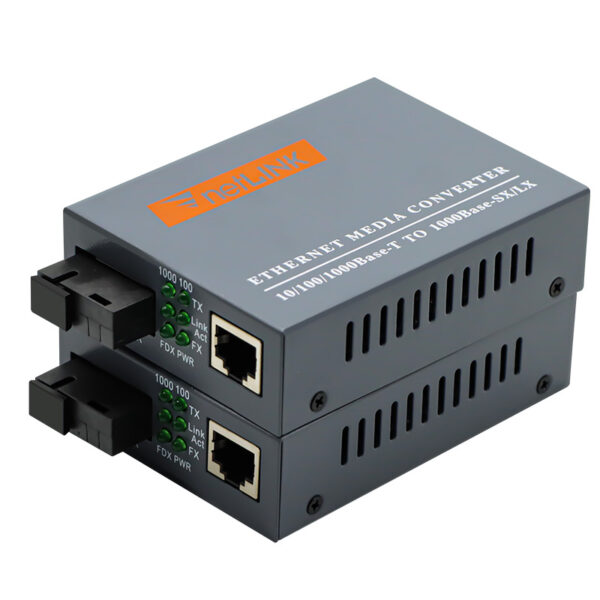
1 Pair Netlink Fiber Media Converter, 10/100/1000Mbps, Single Mode, 20/30KM SC Port, POE, GSM
Price range: $15.00 through $38.00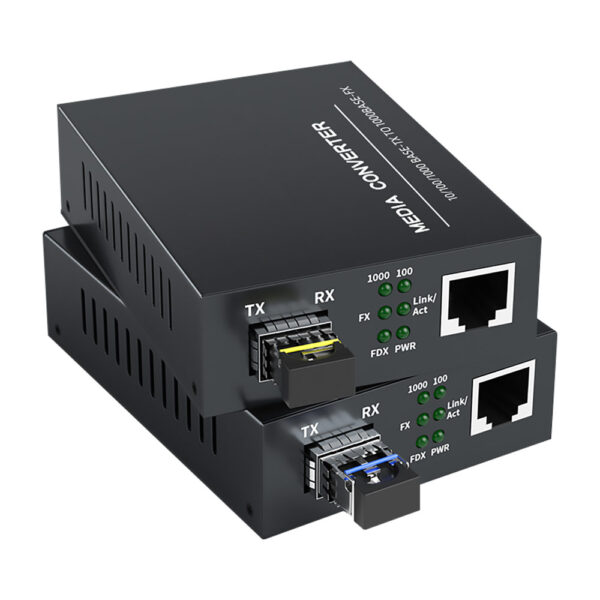
Custom 1.25G SFP Fiber Optic Transceiver, RJ45 10/100/1000Base-T to 1000Base-SX SMF
Price range: $8.90 through $29.99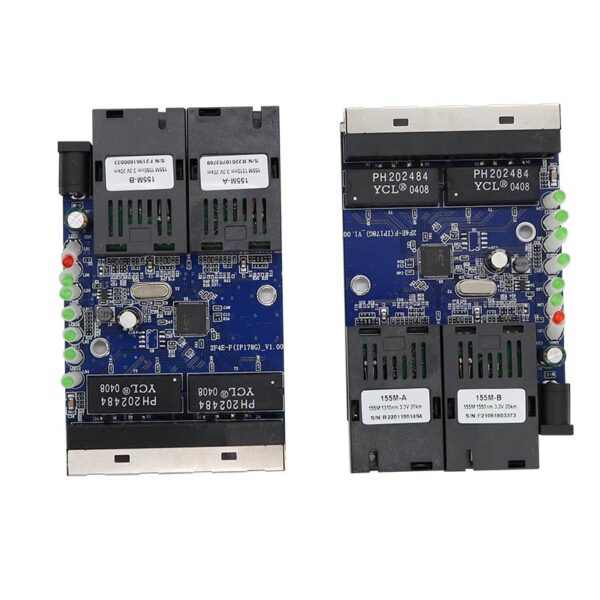
Fiber to RJ45 Media Converter Optical Switch PCBA Board 10/100Mbps – 2 Fiber Ports, 4 RJ45 Ports
Price range: $13.00 through $28.00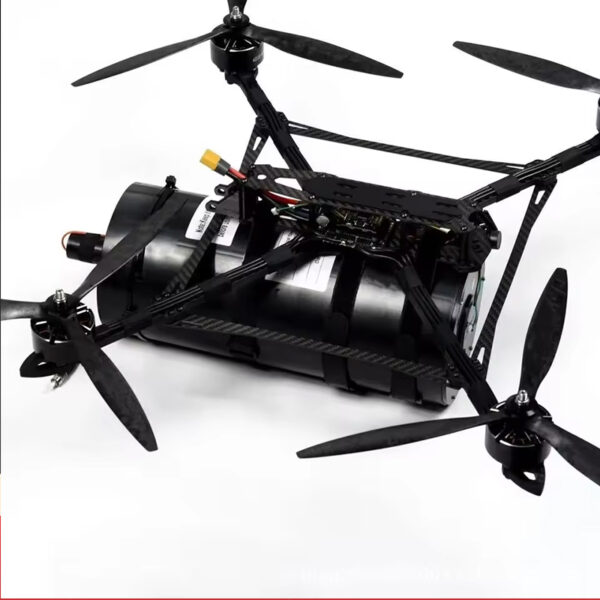
FPV Drone Optical Fiber Kit: 0.26mm G657A2 Fiber Optic Cable Drone Invisible Tether (3/5/10/15/20/30km Canister)
Price range: $27.00 through $490.00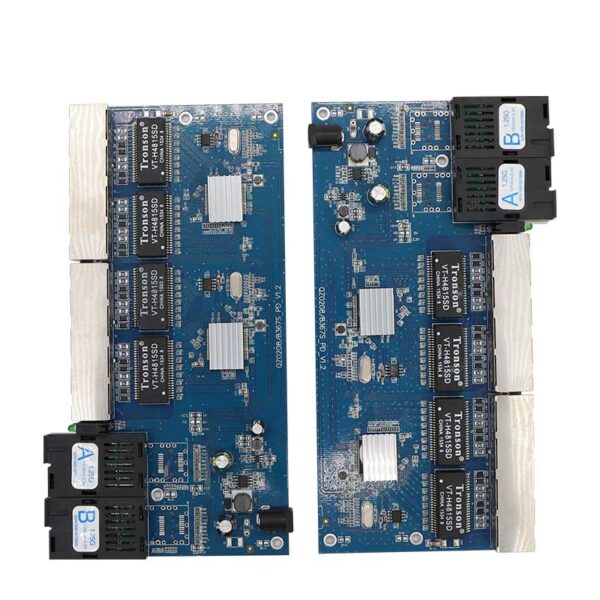
Gigabit Fiber Optic Switch with 8 RJ45 Ports, PoE, 1310/1550nm, PCBA Board
Price range: $15.00 through $32.00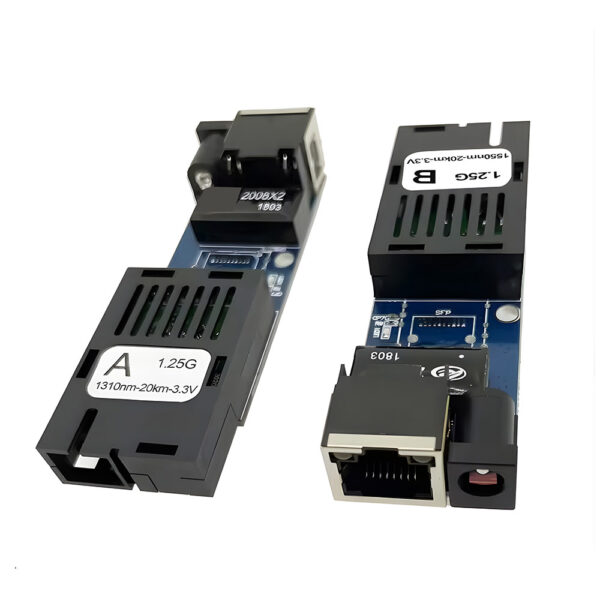
Mini FTTH 1 Pair Gigabit Ethernet Fiber Media Converter – Single Fiber SC Port, Singlemode, 20KM PCBA
Price range: $10.00 through $25.00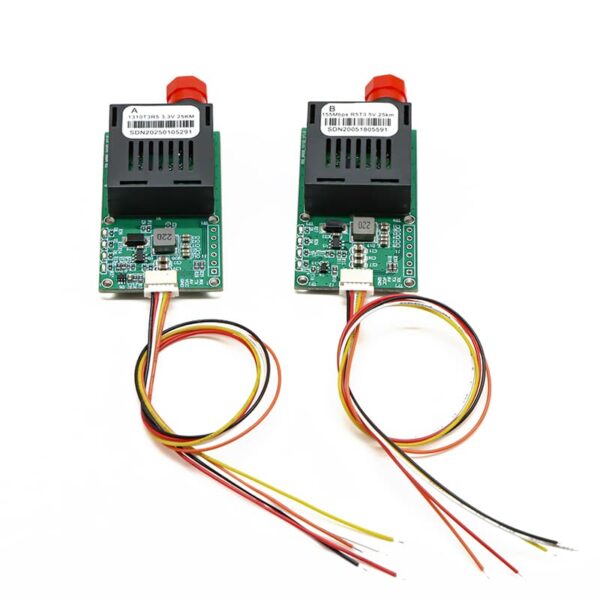
UAV Drone Fiber Optic Transceiver Module | 20-100KM Range | Fiber Interfaces (SFP/SC/FC/LC/ST) | UART/TTL/SBUS Support
Price range: $15.00 through $38.00What Is a Fiber Media Converter?
A fiber media converter serves as a connection device between copper Ethernet devices and fiber optic networks. In situations where new tech is used with old wiring, fiber media converters are small box-type devices that convert electrical signals to optical signals and vice versa, which covers significant distances while maintaining reliable connections.
For example, at home, the fiber media converter will allow the use of a wired internet provider fiber drop to a desktop. For businesses, fiber media converters are often deployed to connect gigabit speeds between floors of a building or remote buildings without rewiring the premises. They basically provide flexibility with the easy use of fiber runs, where the fiber endpoints connect back to a standard Ethernet connection.
It is important to understand that not all transceivers are fiber media converters. Fiber media converters and transceivers convert signals from one type to another; however, a fiber media converter refers to standalone devices that can be plugged in, while SFP refers to a transceiver used to be plugged into a switch or router interface.
Therefore, if your equipment does not have a fiber port, it can be connected with a fiber media converter that is both simple and secure to use.
For a detailed technical overview and a complete set of specifications, see the complete guide on fiber media converters.
Different Types of Fiber Media Converters Explained
Fiber media converters come in many forms to meet the application's needs:
- Ethernet to Fiber & Fiber to Ethernet Converters
These converters perform two-way conversion between copper Ethernet cabling and fiber optic cable. Ethernet to fiber converters allow for long-distance transmission, and fiber to Ethernet converters take fiber signals back to copper ends to continue using already invested hardware. - Copper to Fiber and PoE Fiber Media Converters
Copper to fiber converters allow legacy copper-wired devices to connect to fiber-based networks without too many headaches. PoE fiber media converters also provide the added value of power transmission over fiber and are great for devices such as security cameras and access points in heavily trafficked networks. - SFP Module-Based Media Converters
SFP modules are great because they are modular and flexible. When necessary, these converters incorporate pluggable transceivers, either single-mode or multimode, to easily adjust speed and distance as the needs of the network change. - Single Mode versus Multimode Fiber Converters
Single-mode converters are designed for longer runs or industrial applications, while multimode converters are employed for shorter runs that are usually designed for inside buildings/campuses with a cost-effective high-speed link. - Specialty Converters (HDMI, Coax, etc.)
There are specialty converters for less traditional applications that employ the use of fiber for video, coaxial signals, etc., allowing for long runs of transmission where there may be interference or distance issues.
With this many options available, you will be able to find a fiber media converter that suits your connection challenge in any network (home, office, industrial, or data center).
Choosing the Right Media Converter By User Scenario
Understanding your network environment is an important factor in making a good choice:
- Home Userswant inexpensive, plug-and-play fiber media converters. For example, I installed a gigabit Ethernet fiber media converter to help distribute and eliminate dead zones on my backyard Wi-Fi network for remote security cameras. Here, cost-effectiveness plus easy connection should be the overall priority.
- Small Businessesoften deploy a hybrid network setup that incorporates copper with fiber. Single-mode fiber media converters fill the gaps between distant floors. For example, I combined an adjacent media converter, a fiber-to-copper converter, with PoE converters to power both VoIP phones and cameras, minimizing the need for complexities in possible re-cabling.
- Industrial/Factory Environmentsare riddled with noise and harsh conditions. Rugged Ethernet to fiber optic single-mode media converters operate well here. In fact, during an industrial process deployment, we switched to single-mode fiber to alleviate interruptions caused by electromagnetic interference.
- IT/Data Centersoften need speed and flexibility associated with the devices and communication systems that can operate on high-speed Ethernet fiber media converters. Modular gigabit Ethernet fiber media converters with SFP slots allow hot-plug or insert applications for upgrading or monitoring a network system and can keep data flows uninterrupted.
All in all, adapting a choice based on these settings will help to mitigate downtime and justify the overall ROI—matching the tools or devices based on a real-world application is ultimately what makes the difference.
Fiber Media Converter Comparison Table
| Converter Type | Application | Supported Speeds | Modes Supported | Distance | PoE Support | Typical Price Range |
| Media Converter Fiber to Ethernet | Homes/offices | 1G, 2.5G | Single, Multimode | Up to 20km | Optional | $35-$120 |
| Fiber RJ45 Media Converter | Fiber/RJ45 integration | 1G | Multimode | 550m | No | $25-$80 |
| 10G Fiber Media Converter | Data center/enterprise | 10G | Single, Multimode | 60km+ | No | $150-$700 |
| Copper Fiber Media Converter | Legacy equipment | 10/100/1G | Single, Multimode | 2-20km | No | $35-$95 |
| ComNet Fiber Media Converter | Industrial/security | 1G, 10G | Single, Multimode | 1-100km | Yes/No | $80-$500 |
| Media Converter Multimode Fiber | Campus/LAN segments | 1G | Multimode | 550m-2km | Optional | $30-$100 |
Evaluate speed requirements, distance, mode, and power before making a decision. Balancing user budget and utility will complement a future-proof network extension.
Step-by-step Instructions for Installing a Fiber Media Converter
Installation is not complicated if you are prepared and have gathered the right components for the job. You will need a fiber media converter, power supply, Ethernet cable, and fiber optic patch cord to make it all happen. If you need to extend the distance of the run, a Cat6-to-Fiber Media Converter may help extend your connectivity.
Connect the fiber cable to the fiber port on the media converter (ensure to check the polarity and other options, especially for single-mode). Then, connect an Ethernet cable from the converter to your router or switch. Once connected, plug in the power supply and observe the media converter for an active port (steady) light. Active lights on both ports indicate an established connection.
On my first attempt, while troubleshooting an issue related to a no-link condition, I discovered that a fiber connector had been slightly disengaged from the fiber media converter. Always check for a solid connection and confirm correct configurations prior to fully hanging your media converter to avoid expensive downtime.
Deploying an Ethernet fiber optic media converter in a basic application is easy with a little planning, and anybody can accomplish this.
Latest Trends in Fiber Media Conversion Tech
Innovation in fiber media converters is advancing quickly. The newest 10Gb fiber media converters, proudly boasting ultra-fast, low-latency transfers required to support cloud data centers and increasing IoT and 5G demand, are also seeing size reduction.
Eco-efficient design is producing devices that reduce power consumption and minimize rack space.
Fiber optic transceivers are mimicking this innovation with AI-based diagnostics, allowing users to transition to predictive maintenance for a self-healing network. Use cases for these devices are growing in telecommunications, manufacturing, and data service/data center commercial (approx. > 4%/yr growth anticipated through 2030).
What could we expect from this segment? More intuitive installs, smarter troubleshooting, and more eco-friendly hardware capable of offering efficiency and sustainability gains across all industries.
Frequently Asked Questions
What is a fiber media converter and do I need one?
This has been mentioned, but these devices convert Ethernet and fiber signals. If the Ethernet ports on your hardware do not accept fiber, get a media converter.
Can you mix different brands of converters?
Most converters are built using a standard, so this is usually not an issue. There is nothing wrong with trying a different brand; I wish I could give you more details, but from experience, buying from reliable brands has been a boon thus far.
Is it complicated to set up fiber-to-copper media converters?
Typically not. They should be plug-and-play. Be conscious of the polarity of the cable and watch the LED lights; both of those will tell you what is or isn’t working in the connection.
Do I need two converters for each fiber link?
Most likely, yes. You need one at each end of the fiber to pass the signal reliably and clearly.
How do converters differ in prices?
You can pick up the standard converters on a budget; PoE converters cost more upfront, but will save you time and money in the long run.
Feel free to comment below. Adding anything to the conversation, in the form of a tip or troubleshooting story, is always helpful to everyone reading.
Conclusion
It does not need to be complicated to connect Ethernet to fiber. A good fiber media converter will provide a quick, seamless connection when you need to upgrade your equipment, and you will be all set for any environment. Making the right choice early will save you a tech headache, and make your life easier by ensuring the best performance using the best technology. Join the conversation, leave your comments about your success, questions, or even roadblocks below. You may illuminate someone else's fiber destiny.
